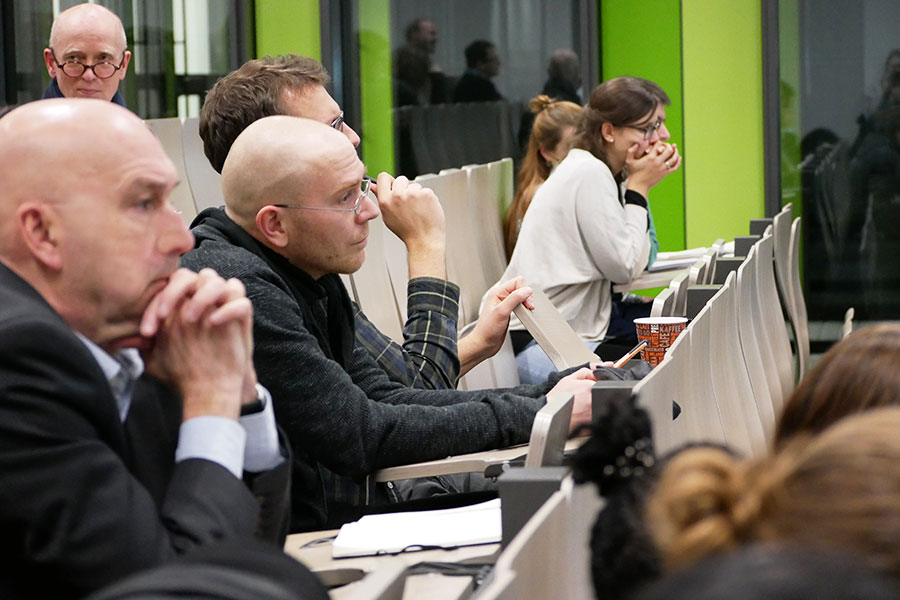SFB 1288
Comparative viewing and the forms of comparison
In January 2018, the lecture series "BlickWechsel" (View Point Changes) continued with two talks on comparative viewing.
Cultural sociologist Dr. Sophia Prinz visited the SFB 1288 and talked about the ratio of perception and practice by connecting praxeological reflections with Merleau-Ponty's "Phenomenology of Perception". One of her assumptions was that every act of perception, per se, already includes the act of comparing.
Regarding the comparative viewing, the difference between the perceived and the non-perceived is crucial. Induced by the physically based visual rivalry, different things can't be fixated at the same time - therefore the act of comparing is already a basic mode for the practice of viewing. Besides these more or less automatic forms of comparisons, actors who compare explicitly also have to own the competence to do comparisons, meaning they have to have already practiced the act of comparing.
One week later, Dr. Lena Bader who is working in visual studies shared her insights on the status of comparing within the historical image studies and art history. Amongst other things, she referred to the beginning of media studies in the field of art history, enhanced by technical innovations like photography.
A fundamental point in the disciplinary understanding of the comparative viewing is the understanding of images in general. Factors like the worth of works, the right to opacity (Glissant) or terms like aura and authority play decisive roles.
The turn is that practice in viewing comparatively then again leads to a certain understanding of images. The active interaction with the recipients of artworks always implies the performative character of the comparative viewing as well as the emergence of an autonomous image space.
jQuery(document).ready(function() { $("#blick_slider").carouFredSel( { circular: true, infinite: true, scroll: { items: 1, duration: 2000, pauseOnHover: true }, auto: true, pagination: "#blick_slider_pag" } ); });-
 Sophia Prinz
Sophia Prinz -

-

-

-

-
 Lena Bader
Lena Bader -

-

-

-

Photos: Rebecca Moltmann